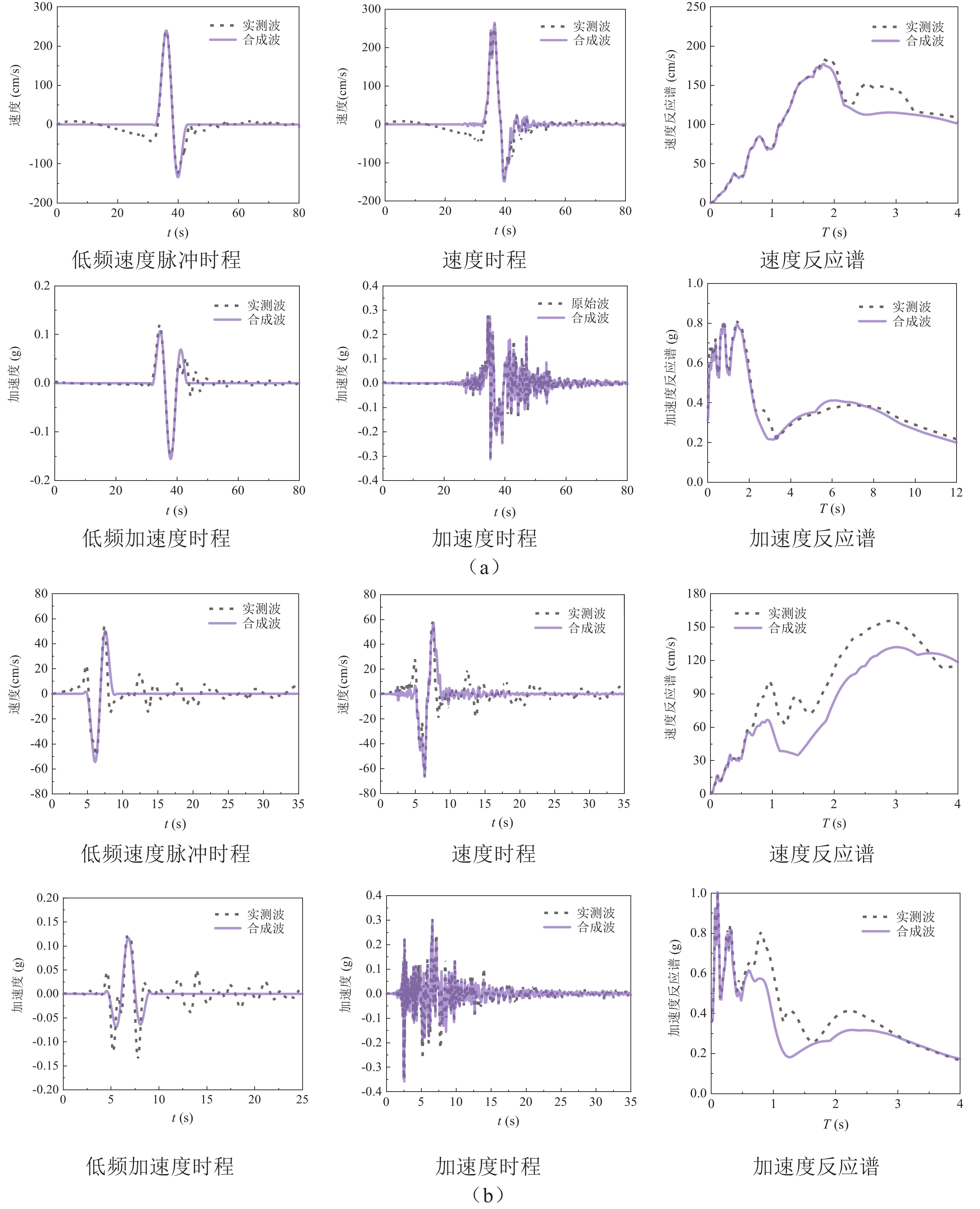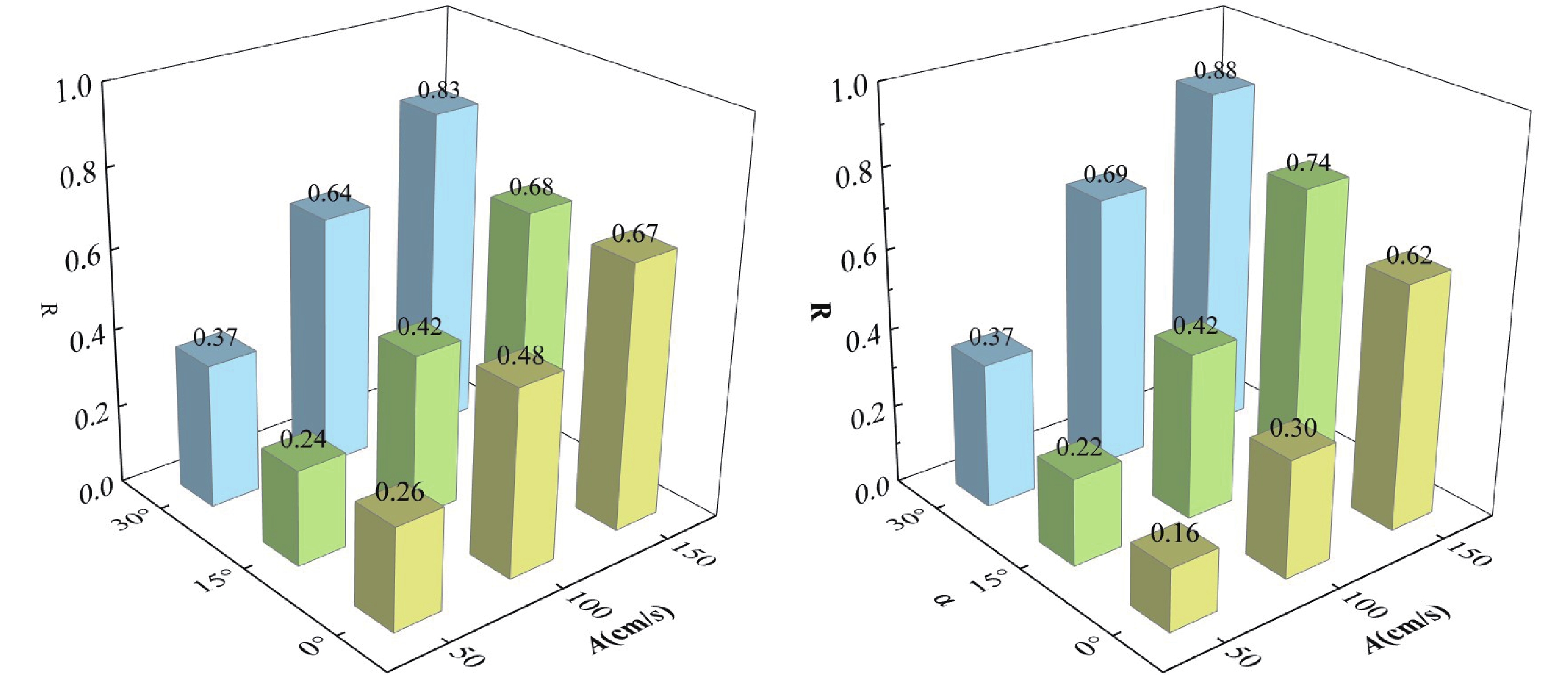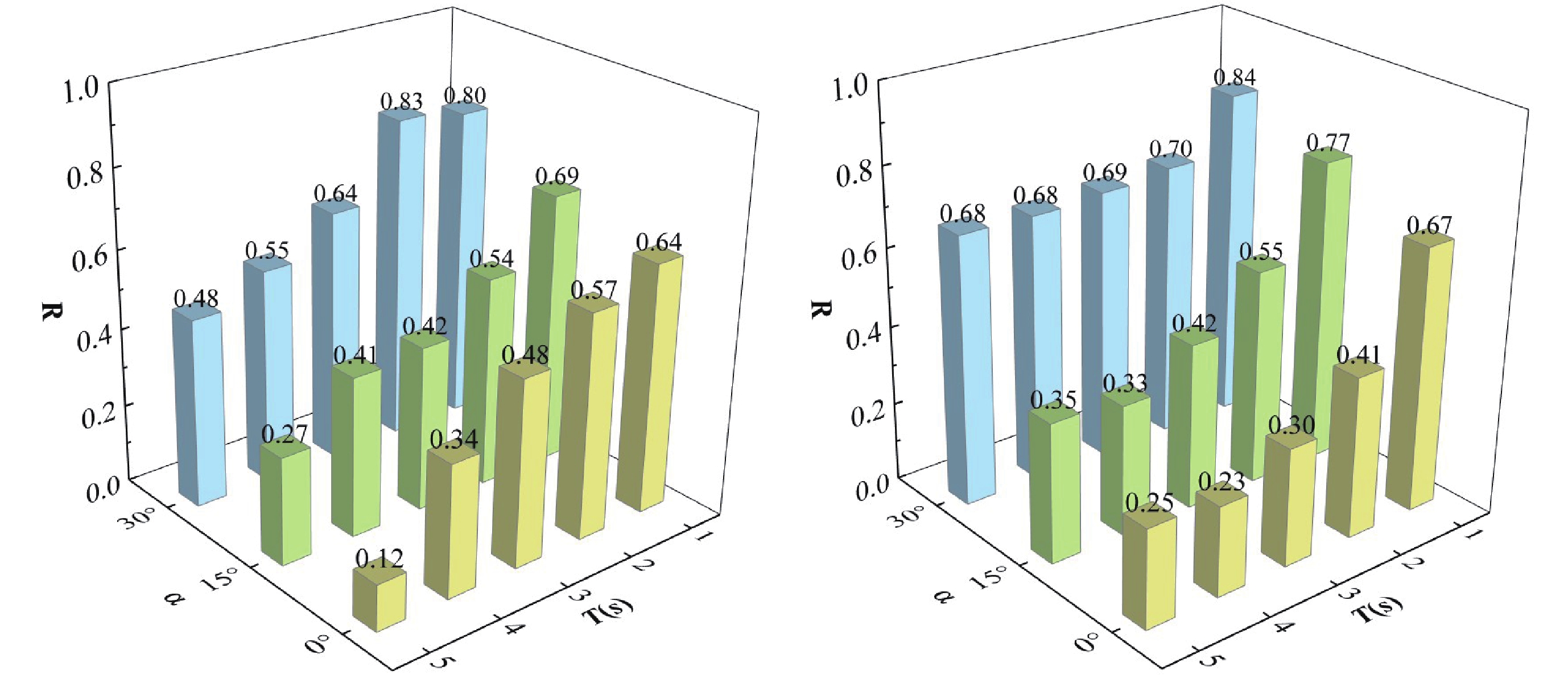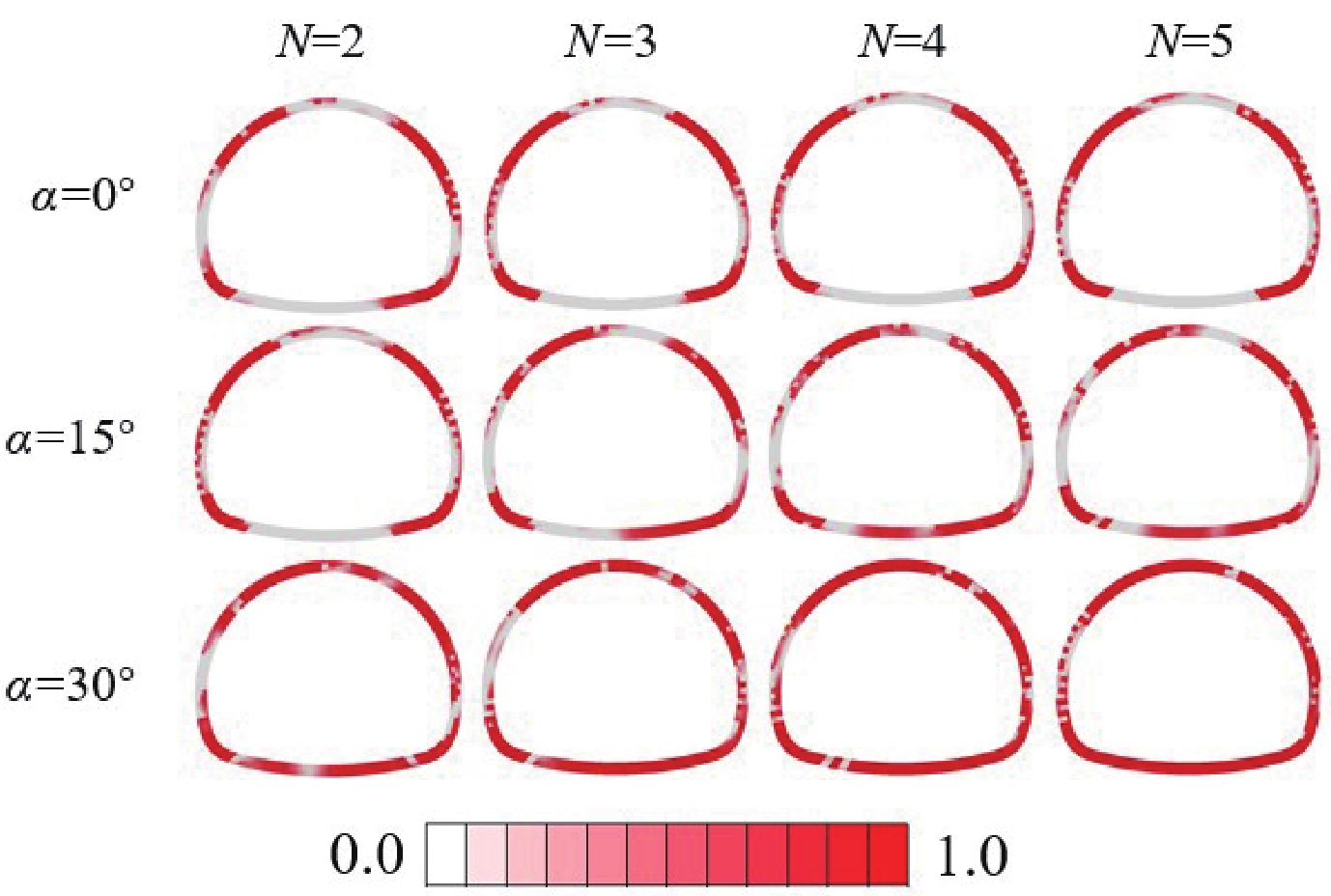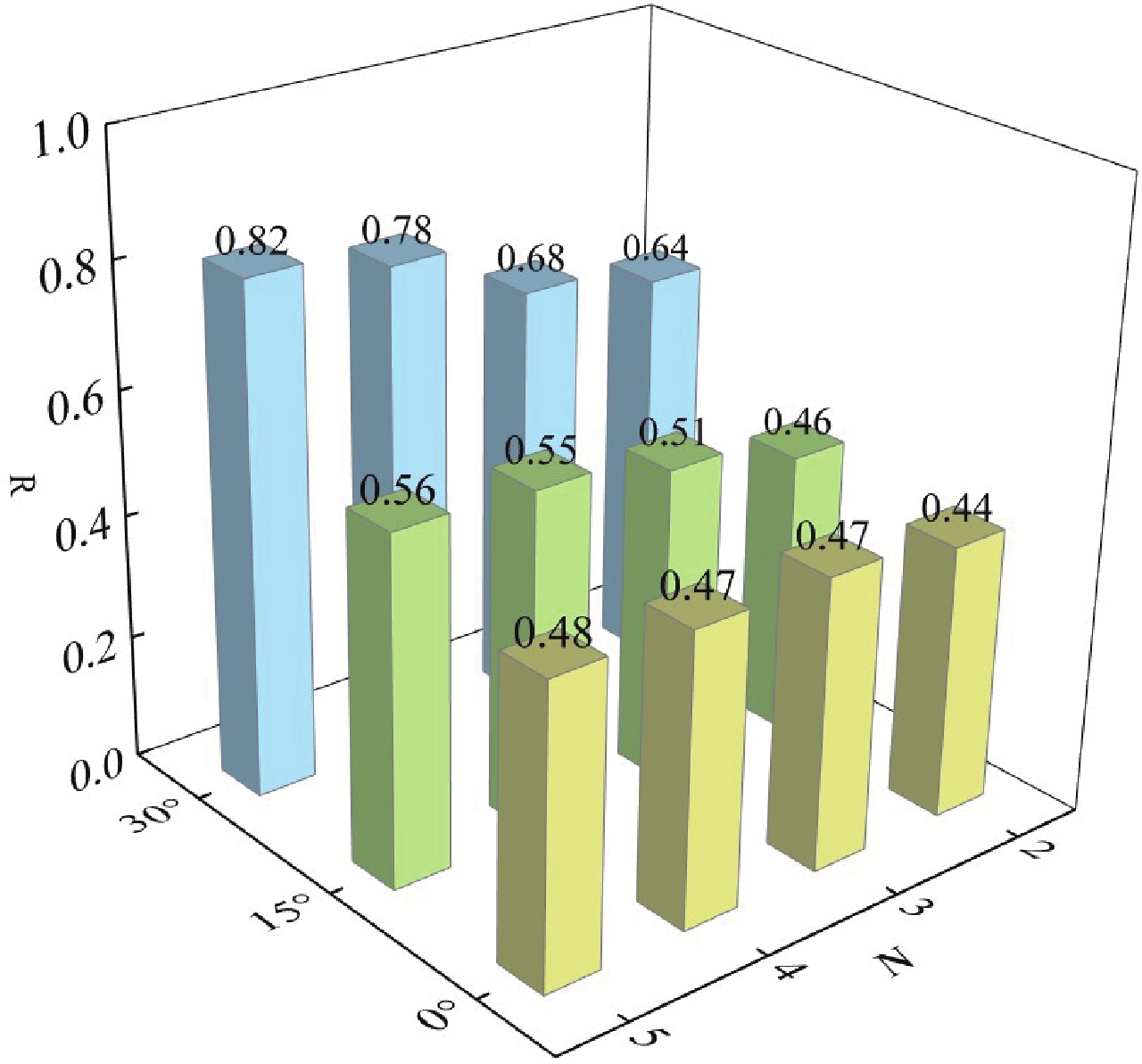Multiscale simulation analysis of seismic response of mountain tunnels considering near-fault pulses and topographic effects
-
摘要:
针对近断层山岭隧道地震响应,基于一种间接边界元-有限元耦合(IBEM-FEM)方法,实现了千米尺度复杂场地放大效应到厘米尺度隧道截面动态损伤的跨尺度高效分析和规律揭示。采用基于等效脉冲模型的合成方法获取具有不同脉冲特性的近断层地震动,验证了地震动合成方法和结构响应耦合模拟方法的有效性和准确性;开展精细化数值模拟研究,重点分析了近断层脉冲型地震动的速度脉冲特性和脉冲参数对地形效应下山岭隧道地震响应的影响规律。结果表明:隧道衬砌结构的损伤程度随着脉冲幅值的增加而增大,相比于方向性效应,滑冲效应对脉冲幅值的变化更为敏感,在斜入射和高幅值脉冲下会引发更严重的结构破坏;隧道结构的损伤程度随着脉冲周期的增加而减小,方向性效应对脉冲周期变化更为敏感;在脉冲斜入射条件下,隧道结构损伤程度随着脉冲个数增加而增大。
Abstract:Mountain tunnels in western China are mostly located in regions with high seismic intensity and complex geological and topographic conditions, where active faults are densely distributed. Many tunnels are constructed in near-fault strong earthquake zones. For example, in the ongoing construction of the Sichuan-Tibet Railway, tunnels account for as much as 70% of the total route, and 54 active faults are distributed along and near the alignment. Numerous seismic investigations have shown that near-fault ground motions have a significant destructive impact on tunnel structures. Notable cases include the 1999 Chi-Chi earthquake in Taiwan, the 2008 Wenchuan earthquake in Sichuan, the 2016 Kumamoto earthquake in Japan, and the 2022 Menyuan earthquake in Qinghai, all of which resulted in severe tunnel damage.
The long-period velocity pulses commonly present in near-fault ground motions are considered key factors contributing to structural damage. However, due to the limited availability of strong earthquake observation records, especially near engineered structures, near-fault pulse-type ground motion records remain scarce. As a result, many existing studies have relied on synthetic ground motion methods to generate seismic time histories for analysis. Currently, research on the seismic response of mountain tunnels under near-fault pulse-type ground motions remains limited, particularly concerning the mechanisms through which pulse characteristics influence tunnel seismic responses, which are still not well understood.
On the other hand, topographic amplification effects induced by mountain terrain also significantly affect tunnel seismic responses. Studies have shown that mountain topography can amplify peak ground velocity (PGV) due to multiple reflections of seismic waves on the surface, leading to localized wave focusing effects and significant spatial variability within the mountain. However, most existing studies on mountain tunnel seismic responses commonly adopt full-space or half-space site models, neglecting topographic effects. Additionally, variations in the incident wave angle can alter the propagation path and energy distribution of seismic waves, further increasing the spatial variability of seismic damage.
This study comprehensively considers the coupled effects of near-fault ground motion characteristics and topographic amplification and proposes a systematic research framework. First, artificial synthesis techniques are employed to generate near-fault pulse-type ground motions. The high-frequency components of two representative recorded ground motions serve as the basis, while the low-frequency components are fitted using an equivalent pulse model. By adjusting pulse parameters, ground motions with different spectral characteristics are synthesized. Second, based on an indirect boundary element method-finite element method(IBEM-FEM)coupled method, a cross-scale efficient analysis was achieved, bridging the amplification effects in kilometer-scale complex sites to the dynamic damage of tunnel cross-sections at the centimeter scale, thereby revealing underlying seismic response patterns. Finally, taking pulse amplitude, pulse period, and pulse number as key parameters, the influence of near-fault pulse-type ground motions with different incident angles on tunnel seismic responses is examined, revealing the damage and failure patterns of tunnel linings.
The results indicate that tunnel lining damage severity increases with pulse amplitude. Compared with directivity effects, fling-step effects are more sensitive to changes in pulse amplitude, and oblique incidence combined with high-amplitude pulses can cause more severe structural damage. Tunnel damage severity decreases as pulse period increases, with directivity effects being more sensitive to pulse period variations. Under oblique incidence conditions, tunnel structural damage severity increases with the number of pulses.
For seismic design of mountain tunnels in near-fault regions, the combined impact of near-fault pulse effects and topographic amplification should be carefully considered, and tunnel seismic strategies should be optimized. Firstly, the locations of seismic wave focusing and amplification within the mountain should be identified and avoided to reduce the adverse effects of localized seismic motion amplification on tunnel structures. Secondly, for high-amplitude pulse effects, it is recommended to strengthen the seismic design of tunnel linings, particularly in areas where fling-step effects are prominent, to mitigate the damage caused by extreme ground motions. Additionally, during the design process, the influence of seismic wave incidence angle should be fully considered, and reinforcement measures for tunnel linings should be implemented accordingly to enhance tunnel seismic performance under complex wave propagation conditions.
-
-
表 1 各材料的本构模型和参数
Table 1 The constitutive models and parameters of each material
材料 本构模型 输入参数 围岩 M-C 密度ρ 弹性模量 E 泊松比 ζ 内摩擦角 φ 粘聚力c 2200 kg/m33 GPa 0.3 35° 1 MPa 混凝土衬砌 CDP 密度ρ 弹性模量 E 泊松比 ζ 抗压强度fc 抗拉强度ft 2500 kg/m330 GPa 0.2 21.20 MPa 2.43 MPa 钢筋 双折线本构 密度ρ 弹性模量 E 泊松比 ζ 抗压强度fc 抗拉强度ft 7850 kg/m3200 GPa 0.28 400 MPa 400 MPa 表 2 近断层地震动基本信息
Table 2 Basic information of near fault seismic ground motion
近断层地震动类型 地震名称 台站 断层距/km 峰值速度/ (cm·s−1) Tp/s 向前方向性效应脉冲 帝王谷地震 El Centro Array #6 1.35 67.02 3.77 滑冲效应脉冲 集集地震 TCU-068 0.32 249.59 12.28 表 3 近断层地震动脉冲参数
Table 3 Arterial parameters of near fault earthquakes
近断层地震动类型 台站 A/(cm·s−1) Tp/s φ/(°) γ t0/s 向前方向性效应脉冲 El Centro Array #6 70 3.77 80 1.3 6.8 滑冲效应脉冲 TCU-068 289 11.50 -200 1.02 37.4 表 4 特征点加速度峰值
Table 4 Peak acceleration of characteristic points
特征点位置 实测地震动峰值加速度(m/s2) 合成地震动峰值加速度(m/s2) 误差(%) EI-Centro Array#6 TCU-068 EI-Centro Array#6 TCU-068 EI-Centro Array#6 TCU-068 拱顶 5.71 8.95 5.12 8.96 10.33 0.11 左拱肩 5.57 9.30 5.24 9.39 5.92 0.97 左边墙 5.08 8.83 4.64 8.95 8.66 1.36 左拱脚 5.33 8.21 4.97 8.86 6.75 7.91 仰拱 5.38 8.39 5.01 8.65 6.87 3.09 表 6 特征点Mises应力峰值
Table 6 Mises stress peak values at characteristic points
特征点位置 实测地震动Mises应力峰值(Mpa) 合成地震动Mises应力峰值(Mpa) 误差(%) EI-Centro Array#6 TCU-068 EI-Centro Array#6 TCU-068 EI-Centro Array#6 TCU-068 拱顶 7.91 10.64 7.42 10.42 6.19 2.07 左拱肩 21.47 22.17 19.42 22.3 9.55 0.58 左边墙 10.06 12.61 9.84 12.89 2.18 2.22 左拱脚 28.88 29.57 27.91 29.62 3.35 0.17 仰拱 3.61 5.09 3.54 4.63 1.94 9.03 表 5 特征点位移峰值
Table 5 Peak displacement of characteristic points
特征点位置 实测地震动峰值位移(m) 合成地震动峰值位移(m) 误差(%) EI-Centro Array#6 TCU-068 EI-Centro Array#6 TCU-068 EI-Centro Array#6 TCU-068 拱顶 0.862 13.4 0.831 13.15 3.59 3.59 左拱肩 0.86 13.41 0.829 13.14 3.6 3.6 左边墙 0.852 13.38 0.823 13.13 3.4 3.4 左拱脚 0.847 13.36 0.819 13.12 3.31 3.31 仰拱 0.844 13.34 0.818 13.12 3.08 3.08 表 7 脉冲参数分析工况
Table 7 Pulse parameter analysis working conditions
地震波 脉冲幅值A/(cm/s) 脉冲周期T/s 脉冲数量N TCU-068 100 1、2、3、4、5 原地震动 EI-Centro Array#6 100 1、2、3、4、5 原地震动 TCU-068 50、100、150 3 原地震动 EI-Centro Array#6 50、100、150 3 原地震动 EI-Centro Array#6 100 3 2、3、4、5 表 8 不同脉冲幅值下山岭隧道衬砌结构特征点水平位移(单位:m)
Table 8 Horizontal displacement of characteristic points in the lining structure of mountain tunnel with different pulse amplitudes (unit:m)
工况 方向性效应脉冲幅值 滑冲效应脉冲幅值 50 cm/s 100 cm/s 150 cm/s 50 cm/s 100 cm/s 150 cm/s 仰拱 0.527 1.049 1.567 0.822 1.639 2.450 左边墙 0.531 1.056 1.574 0.831 1.653 2.480 拱顶 0.539 1.074 1.611 0.837 1.667 2.500 右边墙 0.532 1.061 1.592 0.824 1.646 2.458 注:数据为监测点时程曲线最大绝对值。 表 9 不同脉冲周期下山岭隧道衬砌结构特征点水平位移 (单位:m)
Table 9 Horizontal Displacement of Characteristic Points in the Lining Structure of mountain tunnel with Different Pulse Cycles (unit:m)
工况 方向性效应脉冲周期 滑冲效应脉冲周期 1 s 2 s 3 s 4 s 5 s 1 s 2 s 3 s 4 s 5 s 仰拱 0.246 0.737 1.049 1.206 1.419 0.519 1.111 1.639 2.028 2.359 左边墙 0.250 0.746 1.056 1.210 1.425 0.536 1.128 1.653 2.036 2.363 拱顶 0.261 0.774 1.074 1.220 1.426 0.544 1.145 1.667 2.045 2.367 右边墙 0.254 0.755 1.061 1.212 1.418 0.524 1.118 1.646 2.033 2.361 注:数据为监测点时程曲线最大绝对值。 表 10 不同脉冲个数下山岭隧道衬砌结构特征点水平位移
Table 10 Horizontal displacement of characteristic points in the lining structure of mountain tunnel with different numbers of pulses (unit:m)
特征点位置 不同脉冲个数下特征点的水平位移/m 2 3 4 5 仰拱 0.246 0.737 1.049 1.206 左边墙 0.250 0.746 1.056 1.210 拱顶 0.261 0.774 1.074 1.220 右边墙 0.254 0.755 1.061 1.212 注:数据为监测点时程曲线最大绝对值。 -
陈笑宇,王东升,付建宇,国巍. 2021. 近断层地震动脉冲特性研究综述[J]. 工程力学,38(8):1–14+54. Chen X Y,Wang D S,Fu J Y,Guo W. 2021. A review of research on the characteristics of near fault seismic pulse[J]. Engineering Mechanics,38(8):1–14+54 (in Chinese).
杜修力,黄景琦,赵密,金浏. 2014. SV波斜入射对岩体隧道洞身段地震响应影响研究[J]. 岩土工程学报,36(8):1400–1406. Du X L,Huang J Q,Zhao M,Jin L. 2014. Effect of oblique incidence of SV waves on seismic response of portal sections of rock tunnels[J]. Chinese Journal of Geotechnical Engineering,2014, 36 (8):1400-1406 (in Chinese).
巩江峰,王伟,王芳,杨昌贤,袁溢. 2024. 截至2023年底中国铁路隧道情况统计及2023年新开通重点项目隧道情况介绍[J]. 隧道建设(中英文),44(2):377–392. Gong J F,Wang W,Wang F,Yang C X,Yuan Y. 2024. Statistics of railway tunnels in china as of the end of 2023 and introduction to key newly opened projects in 2023[J]. Tunnel Construction (Chinese and English),44(2):377–392 (in Chinese).
李天斌. 2008. 汶川特大地震中山岭隧道变形破坏特征及影响因素分析[J]. 工程地质学报,16(6):742–750. Li T B. 2008. Analysis of deformation and damage characteristics and influencing factors of mountain tunnels in the Wenchuan earthquake[J]. Journal of Engineering Geology,16(6):742–750 (in Chinese).
刘英,庄海洋,张季,周珍伟. 2024. 近直下型断层的地铁车站结构地震响应[J]. 岩土工程学报,46(4):843–852. Liu Y,Zhuang H Y,Zhang J,Zhou Z W. 2024. Seismic response of subway station structures under straight-down near-fault[J]. Chinese Journal of Geotechnical Engineering,46(4):843–852 (in Chinese).
薛翊国,孔凡猛,杨为民,邱道宏,苏茂鑫,傅康,马新民. 2020. 川藏铁路沿线主要不良地质条件与工程地质问题[J]. 岩石力学与工程学报,39(3):445–468. Xue Y G,Kong F M,Yang W M,Qiu D H,Su M X,Fu K,Ma X M. 2020. Main adverse geological conditions and engineering geological problems along the Sichuan Tibet Railway[J]. Journal of Rock Mechanics and Engineering,39(3):445–468 (in Chinese).
徐略勤,袁茂均,左英,沈正璇,徐粒寒. 2024. 近断层脉冲型地震作用下大跨拱桥动力响应分析[J]. 振动与冲击,43(9):94–104+148. Xu L Q,Yuan M J,Zuo Y,Shen Z X,Xu L H. 2024. Dynamic response analysis of long-span arch bridge under near-fault pulse seismic motion[J]. Journal of Vibration and Shock,43(9):94–104 (in Chinese).
禹海涛,朱晨阳,傅大宝,许乃星,卢哲超,蔡辉腾. 2024. 基于ST-CNN的脉冲型地震动与脉冲周期融合识别方法[J]. 岩土工程学报,46(12):2675–2683. Yu H T,Zhu C Y,Fu D B,Xu N X,Lu Z C,Cai H T. 2024. A hybrid method to identify pulse-like ground motions and pulse periods based on ST-CNN[J]. Chinese Journal of Geotechnical Engineering,46(12):2675–2683 (in Chinese).
张威,李明,姬云平,李国良,赵录学,李守刚. 2022. 青海门源M6.9地震典型隧道破坏特征分析与启示[J]. 地震工程学报,44(3):661–669. Zhang W,Li M,Ji Y P,Li G L,Zhao L X,Li S G. 2022. Analysis and Inspiration of Typical Tunnel Damage Characteristics in the M6.9 Earthquake in Menyuan,Qinghai Province[J]. China Earthquake Engineering Journal,44(3):661–669 (in Chinese).
Álvarez-Rubio S,Sánchez-Sesma F J,Benito J J,Alarcón E. 2004. The direct boundary element method:2D site effects assessment on laterally varying layered media (methodology)[J]. Soil Dyn. Earthq. Eng,24(2):167–180. doi: 10.1016/j.soildyn.2003.09.003
Corigliano M,Scandella L,Lai C G,Paolucci R. 2011. Seismic analysis of deep tunnels in near fault conditions:a case study in Southern Italy[J]. Bull. Earthq. Eng,9:975–995.
Dai D H,Zhang N,Lee V W,Gao Y F,Chen X. 2019. Scattering and amplification of SV waves by a semi-cylindrical hill in a half-space by a wavefunction-based meshless method using mapping and point-matching strategies[J]. Eng. Anal. Bound. Elem,106:252–263.
Li S,Zhang F,Wang J Q,Alam M S,Zhang J. 2017. Effects of near-fault motions and artificial pulse-type ground motions on super-span cable-stayed bridge systems[J]. J. Bridge Eng,22(3):04016128.
Liu Z X,Zhang H,Cheng A,Wu C Q,Yang G G. 2019. Seismic interaction between a lined tunnel and a hill under plane SV waves by IBEM[J]. Int. J. Struct. Stab. Dyn,19(2):1950004.
Liu Z X,Liu J Q,He W G,Meng S B,Chen H. 2024. Nonlinear seismic response and damage evolution of a mountain tunnel:Multi-scale simulation by IBEM-FEM coupled method[J]. Eng. Anal. Bound. Elem,159:364–377.
Mavroeidis G P,Papageorgiou A S. 2003. A mathematical representation of near-fault ground motions[J]. Bull. Seismol. Soc. Amer,93(3):1099–1131.
Mei X,Sheng Q,Cui Z. 2021. Effect of Near-Fault Pulsed Ground Motions on Seismic Response and Seismic Performance to Tunnel Structures[J]. Shock Vib,2021(1):9999007.
Sharma S,Judd W R. 1991. Underground opening damage from earthquakes[J]. Eng. Geol,30(3-4):263–276.
Wang W L,Wang T T,Su J J,Lin C H,Seng C R,Huang T H. 2001. Assessment of damage in mountain tunnels due to the Taiwan Chi-Chi Earthquake[J]. Tunn. Undergr. Space Technol,16(3):133–150.
Wu D,Gao B,Shen Y,Zhou J,Chen G. 2015. Damage evolution of tunnel portal during the longitudinal propagation of Rayleigh waves[J]. Nat. Hazards,75:2519–2543.
Yuan X,Men F L. 1992. cattering of plane SH waves by a semi-cylindrical hill[J]. Earthq. Eng. Struct. Dyn,21(12):1091–1098.
Zhang X,Jiang Y,Sugimoto S. 2018. Seismic damage assessment of mountain tunnel:A case study on the Tawarayama tunnel due to the 2016 Kumamoto Earthquake[J]. Tunn. Undergr. Space Technol,71:138–148.
-
期刊类型引用(0)
其他类型引用(9)





 下载:
下载:



